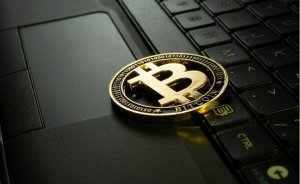Driving competitive advantage from FX TCA to LPA – what’s it all about?
Benjamin Disraeli once said, “as a general rule, the most successful man in life is the man who has the best information.” This line has never been more significant than in today’s data-fuelled financial markets, where detailed analysis of information can provide that all-important competitive edge – not just for now, but in the future.

By Daniel Chambers, Head of Data & Analytics, BidFX
Traditionally, to achieve this, market participants have adopted Transaction Cost Analysis (TCA) to reduce costs and hone trading strategies. The TCA approach has been successful, particularly in FX, where the idiosyncrasies and inherently complex structure of the asset class have been largely overcome.
Most financial institutions have some form of TCA in place and use it simply as a measurement of historical trading patterns. Effectively, all TCA products are based on historical information, answering questions such as – how did I perform over the past 6-months with the EUR/USD spot currency pair? This is all well and good, but this insight is based on what has happened, not what is likely to happen. The issue is that TCA has primarily been used for regulatory box-ticking, or an attempt to save on explicit and implicit trading costs. But times are changing – and the need to capture the vast amounts of liquidity provider data is, slowly but surely, driving market participants away from the old TCA model.
However, while it is often easy to point out limitations in an existing model, it is pointless to move away from it unless there is a more advanced alternative. Over the course of the next year, more and more financial institutions will begin shifting away from TCA, towards another three-letter acronym called LPA, or Liquidity Provision Analytics, to give it its full description. LPA moves away from measuring to see what has happened, to looking into the underlying reasons why a trade IS even happening. Take the example of an FX trader struggling to execute an order efficiently. As a consequence of their struggles, there may well be a very big difference between the expected price of a trade, and the price at which the trade is executed (slippage costs). Now it is one thing to know the slippage costs, it is another thing to understand exactly why the costs are slipping.
In contrast, one of the reasons market participants could turn to LPA is to see which liquidity providers may well be contributing to the slippage costs. Effectively, this means a shift from the traditional TCA model of looking to see what happens, to an LPA approach that looks to see the different liquidity providers affecting the costs. This begs the question, why haven’t more financial institutions adopted LPA already?
The answer lies in the fact that numerous TCA third-party liquidity providers do not currently have access to the required data. They may have the transaction, reference, and benchmark data, but what they do not possess is information from every liquidity provider (LP), and streaming prices. This is down to the fact that many of them are not connected to the LPs sitting between brokers and portfolio managers.
For the LPA shift to happen, market participants need to anticipate what clients might require from their data in the future. This includes pressure for higher returns triggering clients to demand even better execution. This will see firms asking more testing questions above and beyond the standard analysis. As a case in point, these questions could be around the best algo to use for a specific trading scenario. As algorithmic trading continues to cement itself in FX, there is still much debate over what constitutes the best algo amongst the multitude deployed across the market.
It is not just about algos, there could be a request for documenting data from a voice transaction that needs to be reported promptly. As we move forward, asset managers who achieve competitive advantage will be the ones that adopt an LPA approach in order to evolve their trading strategies in FX, using data to answer the testing questions for tomorrow, not just the ones for today.
 Daniel Chambers is Head of Data & Analytics at BidFX, where he is responsible for improving upon and building new data and analytics tools that help drive decision making and add value to both buy-side and sell-side institutions at BidFX. Prior to joining BidFX, Daniel was Head of Trading at Sequoia Capital Fund Management LLP. During his time at Sequoia, Daniel was responsible for all aspects of trading within Sequoia Capital Fund Management – constantly working to reduce trading cost and efficiency through the building of execution algorithms and implementation of trade cost analysis tools.
Daniel Chambers is Head of Data & Analytics at BidFX, where he is responsible for improving upon and building new data and analytics tools that help drive decision making and add value to both buy-side and sell-side institutions at BidFX. Prior to joining BidFX, Daniel was Head of Trading at Sequoia Capital Fund Management LLP. During his time at Sequoia, Daniel was responsible for all aspects of trading within Sequoia Capital Fund Management – constantly working to reduce trading cost and efficiency through the building of execution algorithms and implementation of trade cost analysis tools.









